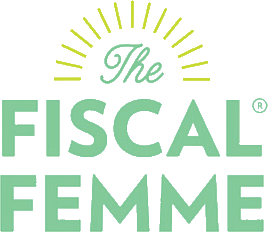The Worst Day of My First Internship: Pay Day
When I got an investment banking internship, I was SO excited about my future paychecks. At the time, interns made the same salary as a first year analyst, prorated for the amount of time we worked. So I divided $60,000 by 12 to figure out what I’d earn each month. $5,000 - wow, great!
I thought, “Yay! I am going to save so much money this summer!” Just kidding. Let’s be real. I didn’t think about saving at all. I thought, “this is going to be the most fun summer ever!”
While I knew logically that things would be taken out of my paycheck, I didn’t factor that into my planning. And I’ve found that I’m not alone in this. How many of us actually looked at a paycheck calculator before choosing our first apartment? I certainly didn’t!
My first paycheck
So there I was. My first pay day. Ready to go out and celebrate. I was shocked when I logged in and saw a number that was much lower than I expected. Womp womp.
Whether we’re deciding whether or not to take a new job, are choosing what to spend on an apartment, or are putting together our budget (a.k.a. spending plan or happiness allocation), it’s important to factor in the number that actually hits our bank account. That’s the number that we have to work with. That’s the number we get to allocate.
Before we can use a paycheck calculator to figure out what’s actually going to hit our bank accounts, there are a few things we need to understand.
Important tax forms
W-4
You might remember seeing this form when you started your last job. It tells your employer how much to withhold from your paycheck in taxes.
How does it know? Your allowances. The more allowances you claim, the less money for taxes is withheld from each of your paychecks. If you claim zero allowances, the most money will be withheld. As you have more dependents, you can claim more allowances.
If you get a refund or owe more money at the end of the year, you may want to change your allowances. You can just ask your employer to submit a new form if you want to make changes.
W-2
Your W-2 is a summary of what actually happened over the last year. It shows how much you earned and how much your company withheld in taxes. It also shows how much of your income went to Social Security, Medicare, and benefits. You’ll need this form to file your taxes.
1099
If you are self-employed or receive freelance income, you’ll receive a 1099 form from companies that paid you over $600. This is how the government knows what you were paid. No taxes are withheld when you are paid on a contract basis, so it will be up to you to set money aside. Depending on your income, you may have to pay quarterly estimates to the IRS.
What else comes out of your paycheck?
If you have a salary and receive a W-2, you’ll see a lot of things come out of your paycheck before it hits your bank account. In addition to taxes (federal, state and local), you will also pay Social Security and Medicare (two benefits you will hopefully receive later), as well as any benefits you receive and pay for through work. This includes company plan retirement contributions like a 401(k) or 403(b), commuter benefits, healthcare benefits, and HSA / FSA benefits.
Moral of the story
Take a few minutes to plug in your salary, location, and tax allowances into a paycheck calculator to figure out your take-home pay. Don’t forget to consider your retirement contributions, healthcare costs, and any other benefits that come out of your paycheck. Use this number when you’re putting together your spending plan.
Then, once your first paycheck and second paycheck hit, check it against the number you planned for. Sometimes paychecks are different if certain benefits are only included once per month.


